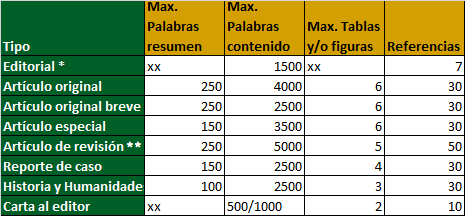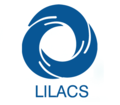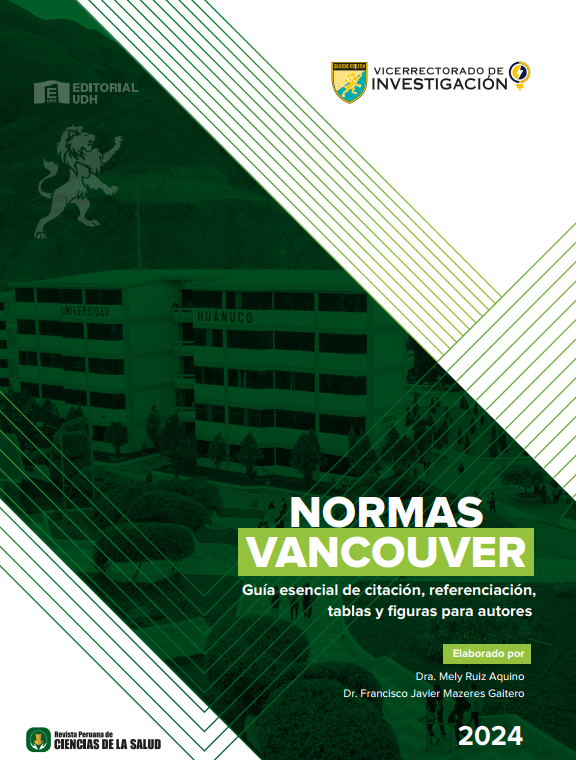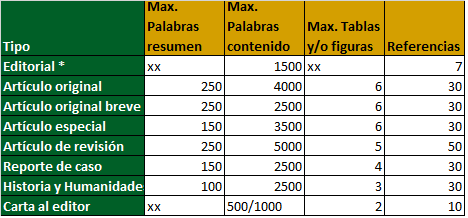Instrucciones para autores
- I. Aspectos generales
- II. Presentación de artículos
- III. Contribución de autoría
- IV. Política de derechos de autor
I. Aspectos generales
Los artículos presentados a la Revista deberán de ser inéditos y originales , es decir, no deben haber sido publicados o estar en vías de publicación en otras revistas. Además, el artículo no debe haber sido presentado a otras revistas simultáneamente. Los artículos deben estar escritos en idioma español o ingles.
La revista publica artículos científicos que abordan temas en el ámbito de conocimientos relacionados a las ciencias médicas y ciencias de la salud; disciplinas: medicina básica y clínica, salud pública. La revista es de acceso abierto y se difunde en versión impresa y electrónica sin costo por publicación para los autores.
El envío de artículos se realizará únicamente en formato electrónico a través del sistema Open Journal System, OJS (http://revistas.udh.edu.pe/index.php/RPCS/user/register): Se debe adjuntar la siguiente documentación de manera obligatoria:
a. El artículo redactado siguiendo las pautas para la presentación de artículos que se detallan enestas instrucciones.
b. El formato de declaración de autoría, el formato de originalidad y la declaración jurada respectivamente llenada y firmada por el autor principal. Dichos documentos se encuentran disponibles en: http://revistas.udh.edu.pe/index.php/RPCS Para que pueda iniciar el proceso editorial de cada artículo es obligatorio la presentación de la declaración jurada debidamente firmada e incluir el correo electrónico del autor principal y de los coautores; de no cumplirse, se devolverá el artículo al autor.
II. Presentación de artículos
En la primera página se consignará:
a. Título del artículo, con un aproximado de 15 palabras; no se deben usar abreviaturas.
b. Identificación de los autores: la forma de presentación de los nombres y los apellidos de los autores es responsabilidad de los mismos.
c. Solo se incluirán por autor una filiación institucional y una filiación académica, incluyendo la ciudad y el país.
d. Para el grado académico, cada autor debe señalar su mayor grado académico obtenido. No se deben registrar los cargos.
e. Código ORCID de cada uno de los autores (p. ej. https://orcid.org/0000-0001-5120-XXXX).
f. Nombres y apellidos, dirección y correo electrónico del autor al que se dirigirá la correspondencia.
g. Además, los autores declararán explícitamente lo siguiente:
• Contribución de los autores. Roles que el autor haya asumido durante el proceso de la investigación y elaboración del artículo, revisar la sección III Contribuciones de Autoría.
• Fuentes de financiamiento. Mencionar si la investigación ha sido autofinanciada o financiada por alguna institución. Si ha sido financiada por un fondo concursable, esto se debe mencionar y describir.
• Conflictos de interés. Declarar cualquier relación, condición, circunstancia o posición que pueda afectar la objetividad del manuscrito. Revisar la sección de Conflictos de Interés.
2. Formato del texto
Los artículos deben presentarse en idioma español o inglés, en formato Word, con un tamaño de letra no menor de 12 en tamaño de hoja A4, a espacio simple. Las tablas y figuras deberán ser incluidas luego de las referencias bibliográficas en formato editable.
3. Referencias bibliográficas
Las referencias bibliográficas estarán referidas exclusivamente al texto del trabajo y serán ordenadas correlativamente, según su aparición, y redactadas siguiendo el estilo de redacción Vancouver de acuerdo con Uniform Requirements for Manuscripts Submitted to Biomedical Journals del ICMJE (ver https://drive.google.com/file/d/1LL4oGOlMLijf4XUdacgyNFNtD8tbGp7f/view ). En el caso de existir más de seis autores, se colocarán los seis primeros seguidos de et al. Se recomienda el uso de gestores de referencias. Añadir el DOI en las que lo tengan.
Ejemplos:
a. Libro Impreso
Domínguez V. Heroica resistencia de la cultura andina: deslindes sobre la educación y la cultura. 2.a ed. Lima: Editorial San Marcos; 2013.
b. Libro Electrónico
Perú. Ministerio de Salud. EsSalud. Planeamiento Hospitalario ante Desastres. Guía para el Diseño de Planes [Internet]. Lima: MINSA; 2014 [Consultado 2020 Dic 15]. Disponible en: https://iris.paho.org/handle/10665.2/33812
b. Capítulo de libro
Reyes E. Construyendo interculturalidad en salud. En: García PJ, editor. Salud pública en el Perú: aproximaciones y nuevos horizontes. Lima: Ministerio de Salud. Instituto Nacional de Salud; 2014. p. 13-39.
c. Artículo Impreso
Romero J, Diaz-Lazo A. Patrones de estilo de vida de los estudiantes ingresantes a la Universidad de Huánuco; 2019. Rev Peru Cienc Salud. 2019 Sep; 1(3): 119-26
d. Artículo Electrónico con URL/DOI
Palma-Lozano D, Luyo D, Cardenas J, Borneo E, Diaz AV. Factores asociados con abortos recurrentes en el Hospital Materno Infantil Showing Ferrari, Huánuco, 2018-2020. Rev Peru Cienc Salud [Internet]. 2021 [Consultado 2021 May 13]; 3(1): 8-13. doi: https://doi.org/10.37711/rpcs.2021.3.1.240
Ver más ejemplos de referencias en la guia vancouver
4. Secciones de la Revista
Los artículos enviados a la Revista deben pertenecer a una de las siguientes secciones.

*. Sección solicitada por el Comité de la Revista Peruana de Ciencias de la Salud
**. En el caso de revisiones sistemáticas, se puede aceptar un número mayor de referencias bibliográficas.
4.1 Editorial
Se presentan a solicitud del director o del editor general de la Revista. Su contenido puede estar orientado a los artículos publicados en el mismo número de la Revista o tratará de un tema de interés según la política editorial. La extensión máxima es de 1500 palabras y un mínimo de 5 referencias bibliográficas, las más actuales posibles.
4.2 Artículo Original
Es un trabajo de investigación inédito sobre una materia relacionada con el campo científico, técnico, humanístico o ético de la medicina. Debe tener la siguiente estructura: resumen, palabras clave, introducción, métodos, resultados, discusión, conclusiones y referencias bibliográficas. La extensión máxima es de 250 palabras para el resumen, 4000 palabras para el contenido, 6 tablas o figuras, y 30 referencias bibliográficas. Adicionalmente, tanto en el caso del artículo original como en el de original breve, se debe tener en cuenta lo siguiente:
Resumen/Abstract. Deberá estar estructurado de la siguiente forma: los objetivos del estudio (lo que se busca determinar con el estudio), los métodos (diseño del estudio), resultados (solo los principales) y las conclusiones más importantes. Si está redactado en español deberá tener la respectiva traducción al inglés o viceversa. La extensión máxima es de 250 palabras.
Palabras clave (Keywords): Se debe proponer un mínimo de tres y un máximo de diez, separadas por punto y coma, en español y en inglés. Se deben utilizar los Descriptores en Ciencias de la Salud de BIREME (DeCS) para palabras clave en español e inglés. El Medical Subject Headings (MeSH) de la National Library of Medicine, alternativamente, se puede utilizar para palabras clave en inglés.
Introducción. Incluye la exposición breve del estado actual del problema, antecedentes, y justificación del estudio con su respectiva citación de la literatura, sin hacer una revisión extensa del tema. No deberá incluir datos ni conclusiones del trabajo realizado. Los objetivos serán planteados en el último párrafo.
Métodos. Describe la metodología usada, de modo que permita la reproducción del estudio y la evaluación de la calidad de la información. Se describirá el tipo y diseño de la investigación, las características de la población y forma de selección de la muestra. Solo detalle las técnicas nuevas y las modificaciones; para las técnicas conocidas, señale sólo la referencia bibliográfica. Mencione también los procedimientos estadísticos empleados. En todos los casos se usará la coma decimal.
Aspectos éticos: Detallar las consideraciones éticas en la realización del estudio en la parte final de la sección de Materiales y Métodos. Si el estudio incluyó seres humanos o animales para experimentación, se debe mencionar que se cumplieron las normas éticas exigidas internacionalmente. Se debe mencionar si estudio tuvo la aprobación previa por un Comité de Ética Institucional. En caso de ser requerido, el Comité Editor podrá solicitar la constancia de aprobación del comité de ética.
Toda investigación en humanos se debe realizar respetando los derechos de los participantes, el respeto a los derechos de los demás seres vivos, el respeto a los recursos naturales, el medio ambiente y al ámbito cultural de las sociedades. En este contexto es fundamental asegurar el cumplimiento de los principios éticos de respeto por las personas, beneficencia (incluye no maleficencia) y justicia; los cuales forman parte de los tratados internacionales que rigen la conducta ética en investigación, como la Declaración de Helsinki y el Reporte Belmont. Los estudios deben asegurar el cumplimiento de estos principios con el objetivo de minimizar los riesgos durante la investigación. Todos los ensayos clínicos peruanos deben estar registrados en la plataforma del Registro Peruano de Ensayos Clínicos (REPEC). Los ensayos clínicos internacionales deben estar en alguno de los registros primarios de la Red de Registros de la Organización Mundial de Salud o en registros aprobados por el Comité Internacional de Editores de Revistas Médicas (ICMJE).
Se recomienda revisar los tratados internacionales para los diversos tipos de artículos:
a) Las guías STROBE, para estudios observacionales; STROBE-ME, para estudios de epidemiología molecular;
b) CONSORT, para ensayos clínicos;
c) STARD, para estudios de pruebas diagnósticas;
d) PRISMA, para revisiones sistemáticas y metaanálisis (se sugiere registrar el protocolo en PROSPERO);
e) COREQ, para estudios cualitativos;
f) CHEERS, para evaluaciones económicas;
g) SAGERS, para informes de sexo y género en el estudio;
h) ARRIVE, para estudios experimentales en animales, etc.
Estas y otras guías e información útil para presentar sus artículos puede encontrarlo en el sitio web de EQUATOR (https://www.equator-network.org/).
Resultados. Presenta los resultados de forma clara, sin incluir opiniones ni interpretaciones subjetivas. El uso de tablas y figuras sirve para complementar la información; limite el número al mínimo necesario. Las unidades de medidas serán de acuerdo al Sistema Internacional de Unidades. Las fotografías serán de la mejor resolución posible.
Discusión. Se recomienda considerar los siguientes aspectos: evidencias principales de su estudio, contraste de las evidencias con otros estudios, fortalezas y limitaciones, finalizando con las conclusiones y recomendaciones. No repita los datos o información ya presentados en las secciones de introducción y resultados. Establezca el nexo de las conclusiones con los objetivos de su estudio, pero absténgase de hacer afirmaciones generales y extraer conclusiones que no están respaldadas en su artículo. Agradecimientos. Cuando corresponda, debe mencionarse en forma específica a quién y por qué tipo de colaboración en la investigación se realiza el agradecimiento. Referencias bibliográficas. Deberá tener las referencias bibliográficas que fueron citadas previamente en el contenido del artículo según las especificaciones mencionadas en el ítem 3.
4.3 Original breve
Es un trabajo de investigación inédito y breve sobre un tema determinado. Puede ser una investigación original preliminar o que no tiene la trascendencia de un trabajo original. Tiene la misma estructura de un artículo original. La extensión máxima es de 250 palabras para el resumen, 2500 palabras para el contenido, 6 figuras o tablas, y 30 referencias bibliográficas.
4.4 Reporte de casos
Es un caso médico de interés diagnóstico, rareza de observación o evidente interés, que amerite su publicación. Tiene la siguiente estructura: resumen/abstract no estructurado, palabras clave/keywords, introducción, reporte del caso, discusión y referencias bibliográficas.
Las figuras que muestren los rostros de los pacientes deberán impedir la identificación de la persona. Se debe asegurar la anonimidad de los casos. Los autores deben declarar si el reporte obtuvo el consentimiento para la publicación por parte de los pacientes o su representante legal, así como la autorización del hospital de procedencia del caso. El Comité editor podrá solicitar evidencia del consentimiento informado si fuera necesario.
La extensión máxima es de 150 palabras en el resumen, 2500 palabras en el contenido, 4 figuras o tablas y 30 referencias bibliográficas.
4.5 Artículo de revisión
Es un artículo que sintetiza, analiza, y actualiza un tema de ciencias de la salud, incluyendo las evidencias científicas. El Comité Editorial puede realizar invitaciones a expertos sobre algún tema de interés para la redacción correspondiente. Tiene la siguiente estructura: resumen/abstract no estructurado, palabras clave/keywords, introducción, metodología de búsqueda y selección de resultados, desarrollo del tema, conclusiones y referencias bibliográficas. La extensión máxima es de 250 palabras en el resumen, 5000 palabras en el contenido, 5 figuras o tablas, y 50 referencias bibliográficas.
4.6 Artículo especial
Es un artículo que se encuentren dentro de la política editorial de la Revista pero que no se ajusta a las características de otras secciones. Incluye ensayos, opiniones, sistematizaciones y experiencias que sean de interés. Deben ser redactados según el siguiente esquema: resumen/abstract no estructurado, palabras clave/keywords, introducción, desarrollo del tema y referencias bibliográficas. La extensión máxima es de 150 palabras en el resumen, 3500 palabras en el contenido, 6 figuras o tablas, y 30 referencias bibliográficas.
4.7 Historia y Humanidades en salud
Los artículos publicados en esta sección tratan sobre temas de historia de la salud en su devenir histórico. Puede incluir estudios sobre eventos históricos de interés para la salud pública. Así como notas biográficas sobre personajes que han contribuido en forma destacada a la salud pública o medicina experimental.
La extensión máxima permitida es de 100 palabras en el resumen, 2500 palabras entre introducción, cuerpo y opcionalmente conclusiones. Se permitirán 3 figuras o tablas, y 30 referencias bibliográficas.
Las secciones de Historia de la Salud Pública deben seguir la siguiente estructura:
Primera página
Título
Resumen no estructurado
Palabras clave
Introducción (donde se indique el contexto del articulo)
Cuerpo del artículo
Conclusiones (opcional)
Referencias bibliográficas
4.8 Carta al editor
Es una comunicación dirigida al director de la Revista. Se aceptarán cartas al editor que cumplan las siguientes consideraciones: cartas que hagan referencias a artículos publicados preferentemente en los dos últimos números (extensión máxima de 500 palabras, 1 figura o tabla y 6 referencias bibliográficas) o con aportes referidos a investigaciones realizadas (extensión máxima de 1000 palabras, 1 figura o tabla, y 10 referencias bibliográficas).
III. Contribución de autoría
Con el propósito de reconocer las contribuciones de los autores individuales, reducir dispuestas de autoría y facilitar la colaboración, la Revista Peruana de Ciencias de la Salud adopta la Taxonomía CRediT, contribuyendo de esta manera con la transparencia y las mejores prácticas editoriales.
- Conceptualización: Formulación de ideas, objetivos y metas generales de la investigación.
- Metodología: Desarrollo y/o diseño de la metodología, creación de modelos.
- Software: Programación y desarrollo de software, diseño de programas para computadoras, implementación de código y algoritmos, testeo de componentes de código.
- Validación: Verificación de la replicabilidad y reproducibilidad de los resultados, experimentos y otros productos de la investigación.
- Análisis formal: Aplicación de las técnicas estadísticas, matemáticas, computacionales u otros procedimientos para analizar y sintetizar los datos.
- Investigación: Conducir el proceso de investigación formal, específicamente realizar los experimentos o la recopilación de datos / evidencia
- Recursos: Proveer los materiales de estudio, reactivos, pacientes, animales, muestras de laboratorio, instrumentos, recursos informáticos o otras herramientas para el análisis.
- Curaduría de datos: Actividades para generar metadatos, depurar datos y preservar los datos de investigación para su reutilización posterior
- Escritura (Borrador original): Preparación, creación y/o presentación del trabajo publicado, redactando específicamente el borrador inicial (se incluye traducción)
- Escritura (Revisión y edición): Preparación, creación y/o presentación del trabajo publicado por los integrantes del equipo original de investigación, específicamente la revisión crítica y los comentarios, incluyendo la etapa de pre o post publicación.
- Visualización: Preparación, creación y/o presentación del trabajo publicado, específicamente la visualización y presentación de los datos
- Supervisión: Conducción y liderazgo para el planeamiento y ejecución de la investigación, incluyendo también asesoría del equipo principal
- Administración del proyecto: Gestión y coordinación para las actividades de planeamiento y ejecución de la investigación
- Adquisición de fondos: Adquisición del apoyo financiero para la realización y publicación del proyecto.
Las declaraciones CRediT se proporcionarán durante el proceso de envío. Las contribuciones de los autores aparecerán encima de la sección de Reconocimiento y/o Agradecimiento del artículo publicado de acuerdo con el siguiente formato:
Ejemplo de contribución de autoría:
Conceptualización: D.C., J.C.; Metodología: D.C.; Software: D.C.; Validación: D.C., J.C.; Análisis Formal: D.C.; Investigación: J.C.; Recursos: D.C., J.C.; Curaduría de datos: D.C.; Escritura (borrador original): D.C., J.C.; Escritura (revisión y edición): D.C., J.C.; Visualización: D.C., J.C.; Supervisión: D.C., J.C.; Administración del proyecto: D.C., J.C.; Adquisición de fondos: D.C., J.C.
Conflicto de interés
La Revista Peruana de Ciencias de la Salud se basa en las Pautas éticas internacionales para la investigación relacionada con la salud con seres humanos del Consejo de Organizaciones Internacionales de las Ciencias Médicas (CIOMS) según dicha entidad los conflictos de interés como aquellas situaciones en las que hay un riesgo sustancial de que los intereses secundarios de una o varias partes interesadas en una investigación incidan de forma indebida sobre su juicio y de ese modo comprometan o socaven el objetivo primario de la investigación.
La Revista Peruana de Ciencias de la Salud solicita que los autores declaren todos los conflictos de interés potenciales o existentes en relación con su investigación. Todos los manuscritos enviados deben incluir una sección de “Conflictos de intereses” al final del manuscrito que enumere todos los intereses en conflicto (financieros y no financieros).
|
Los conflictos de interés financiero incluyen (pero no se limitan a): |
Los conflictos de interés no financiero incluyen (pero no se limitan a) intereses relacionados a los siguientes aspectos: |
|
|
El Comité Editor de la Revista Peruana de Ciencias de la Salud evaluará de forma independiente los conflictos de interés y potenciales conflictos de interés y decidirá la pertinencia o no de la publicación del artículo científico. Los editores, miembros del comité editor y revisores también deben declarar cualquier conflicto de interés y pueden ser excluidos del proceso editorial o de la revisión por pares si éste existe.
En caso de detectar una falta relacionada a la declaración de conflictos de interés, la Revista Peruana de Ciencias de la Salud procederá de acuerdo a las recomendaciones del Comité de Ética en Publicaciones (COPE) según sea el caso:
IV. Política de derechos de autor
Al enviar un manuscrito a la revista, en caso de ser aceptado para su publicación, deberán transferir los derechos patrimoniales a la revista, conservando los derechos morales de autoría. La revista publicará el artículo bajo una licencia Creative Commons Internacional (CC BY 4.0), lo que permite su difusión con reconocimiento de los autores. El mecanismo de transferencia de derechos se realiza al firmar la Declaración Jurada para la Remisión de Manuscritos, mediante el cual autorizan a la revista a reproducir, distribuir y comunicar públicamente el artículo en formato electrónico e impreso. Los autores mantienen el derecho a usar el artículo en fines académicos, de docencia o en repositorios institucionales, citando la fuente original.





















